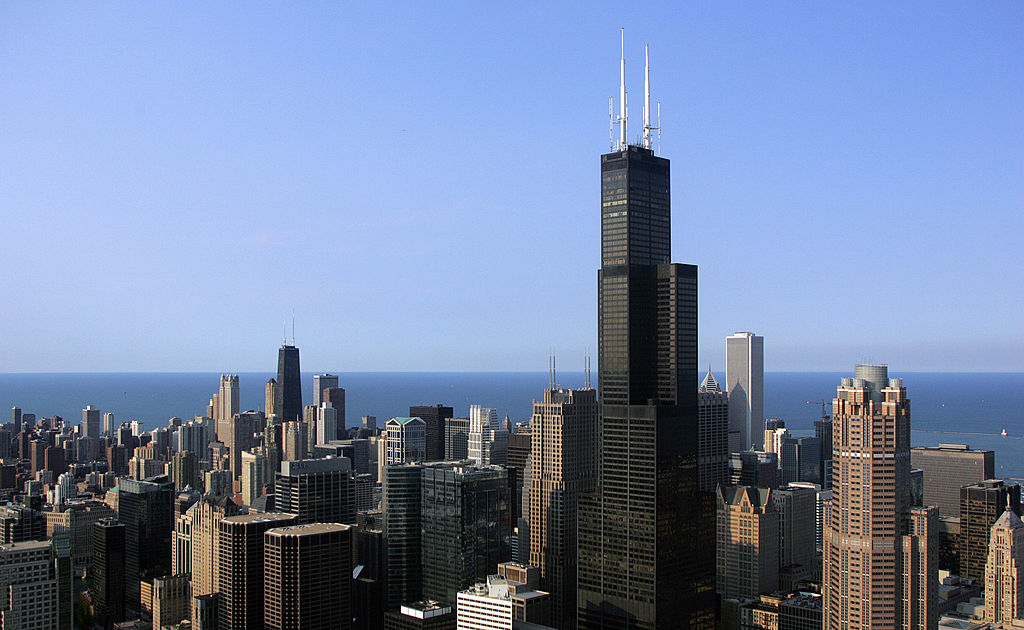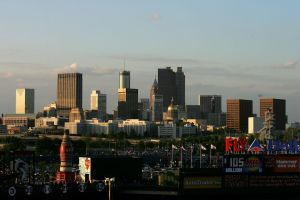There are two ways to think about Chicago. The depressing one is to follow the news. These days it’s pretty bad. In mid-May, two people were killed and seven wounded when a gunman fired into a crowd outside a McDonald’s restaurant on the Near North Side.
I know the McDonald’s well. I went to high school nearby, and my three children attended the elementary school across the street. Once scruffy, the area is now affluent. Overlooking the murder site is a seventy-five-story tower where condos sell for up to $6.1 million. The building’s developer described the shootings as “isolated to [that] location.”
If only. In fact, it was the tenth mass shooting in the city this year, CBS News Chicago reported. New York and Los Angeles had five such shootings between them during the same period. Mass shootings in Chicago have increased from thirty-three in 2019 to fifty-three in 2020 and sixty in 2021.
Most killings happen one at a time, though. The previous week, a teenager had been fatally shot near the Bean, a big sculpture that’s a popular downtown tourist attraction. He’d gotten into a fight with another youth during a “trend,” a meet-up of black kids promoted on social media. This trend attracted 500 people, who milled around downtown streets for hours blocking traffic. Police attempting to control the chaotic scene confiscated eight guns and arrested twenty-six juveniles and five adults.
Violent crime in central Chicago, once rare, has become increasingly common. Through May 31, downtown had seen fifteen homicides and fifty-five shootings, compared to five and forty in 2021. A performance of the musical Moulin Rouge was canceled following a shooting outside the theater. Recently a sleeping homeless man was doused with a flammable liquid and set alight. At the time of writing, reports say he’s not expected to live.
A big factor in all this has been the pandemic. Homicides increased from 508 in 2019 to 806 in 2021, the highest since 1994. Carjackings spiked from 422 to 1,346 — some perpetrators are as young as twelve and normally would have been in school.
The demoralized Chicago police force has seen officers resigning in large numbers, leaving 1,300 vacancies. Some affluent neighborhoods have hired private security firms to patrol the streets, the Wall Street Journal reports.
The other way to think about Chicago, which appeals to geeks like me, is to delve into 2020 census data. To judge solely from these numbers, the city is on the brink of a golden age.
The population is growing. White flight has ended. The number of households in the city is nearing the all-time high. Close to 70,000 homes were built between 2010 and 2020. Despite the departure of 85,000 black people, black college graduates in the city increased by 23,000. Black poverty decreased from 34 percent to 26 percent; poverty citywide fell from 23 percent to 16 percent.
The impetus for these cheery developments is the 200,000 college graduates who moved to Chicago during the 2010s. The neighborhoods where college grads predominate form a large contiguous area stretching along Lake Michigan — I call it the core — that takes in half the city’s population, 1.37 million people.
By Chicago standards the core is diverse — 10 percent Asian, 14 percent black, 18 percent Hispanic, 53 percent white, 4 percent other. It includes the south lakefront neighborhoods where a black professional community is emerging. It’s not uniformly wealthy although it’s becoming more affluent. The main thing is that educated people with options have chosen to live there.
Which of these two portrayals more accurately captures the reality? An optimist can argue things aren’t as bad as they look. Despite the headlines, the twenty-year crime trend is sharply down. In 2000 Chicago recorded 48,000 violent crimes; in 2021 it was 26,000. If you map out crime rates by neighborhood, you find the city has become much safer, including the black communities on the west and south sides.
Still, crime is worse in several respects. It’s more conspicuous, with more happening downtown and in wealthy areas. Violent crime involving guns soared 50 percent between 2019 and 2021. A University of Chicago Crime Lab study suggests Chicago is awash in illegal guns — on a per capita basis, police confiscate six times as many firearms in Chicago as in New York, many of them brought in from neighboring states with lax gun laws, such as Indiana.
Another factor in rising gun crime, arguably, is less aggressive policing. The Crime Lab study notes that a homicide spike in 2016 began shortly after Chicago police officials clamped down on the practice of “street stops,” in which cops pull over minority motorists for minor violations to search for weapons and drugs. The Crime Lab report dismissed the possibility that fewer street stops meant more murders, noting that a similar cutback in New York hadn’t led to a jump in homicides there. But come on — New York isn’t up to its armpits in illegal guns like Chicago.
Not that it matters. While everyone agrees better law enforcement is critical, returning to the old get-tough approach isn’t in the cards. The Chicago police department is under federal oversight after a notorious incident in which an officer blasted sixteen bullets into a teenager named Laquan McDonald and other cops were accused of trying to cover it up. No one trusts the police; the percentage of murders solved is pathetically low.
So we’re in a bind. Chicago’s progress in recent decades stems from its becoming a magnet for talent. If violence scares the talent away, we’re hosed. With the ebbing of the pandemic, perhaps the current crime wave will recede and the positive long-term trend will resume. A faint hope, I know. But it’s the only one we’ve got.
This article was originally published in The Spectator’s July 2022 World edition.


















